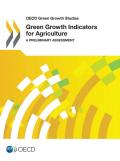
At the Davos forum of January 2014, a group of 14 countries pledged to launch negotiations on liberalizing trade in "green goods" (also known as "environmental" goods), focusing on the elimination of tariffs for an Asia-Pacific Economic Cooperation list of 54 products. The paper shows that the Davos group, with an average tariff of 1.8 percent, has little to offer as countries have avoided submitting products with tariff peaks for tariff reductions. Even if the list were extended to the 411 products on the World Trade Organization list, taking into account tariff dispersion, the tariff structure on environmental goods would be equivalent to a uniform tariff of 3.4 percent, about half the uniform tariff-equivalent for non-environmental goods. Enlarging the number of participants to low-income countries might be possible as, on average, their imports would not increase by more than 8 percent. However, because of the strong complementarities between trade in environmental goods and trade in environmental services, these should also be brought to the negotiation table, although difficulties in reaching agreement on their scope are likely to be great.

Any transition to a sustainable and equitable ‘green economy’ will require restructuring patterns of production, consumption and distribution and finding innovative development ‘alternatives’ to achieve justice on a global scale. Social dimensions – including social and distributive policies, social relationships and institutions, and the ability of all groups to participate in or contest policy choices – will be critical in driving this transformation. However, these dimensions have consistently received least attention in the triad of issues that define sustainable development.
The multi-dimensional nature of the current global crisis requires a holistic approach in addressing economic, social and ecological problems. Following the crisis, several organizations started to publish reports on a concept called Green New Deal (GND) with reference to the New Deal policies of the 1930s in the USA. Since then, the concept has gained increasing popularity among the public. On the other hand, it fuelled a heated discussion between its supporters and ecosocialists. The aim of this paper is to highlight the points at which GND supporters and ecosocialists converge and diverge, and discuss critically the transformative capacity of different GND proposals. We conclude that GND policies can help to set the stage for the transformation long sought by the ecosocialist agenda, and hence from this perspective, these two approaches can be seen as complementary rather than substitutes.
The concept of the green economy presented in three reports from leading global organizations is examined in this paper. These include the United Nations Environment Programme's Towards a Green Economy, the World Bank's Inclusive Green Growth and the Organisation for Economic Co-operation and Development's Towards Green Growth. The main critiques of the concept of the green economy are also considered. Contrary to views that the green economy merely represents ‘green-washing’ and tweaking of the current economic system, this paper concludes that the green economy has the potential to effect substantive and transformative change towards the goal of sustainable development.
This paper argues that there are significant opportunities and challenges for promoting inclusive green growth in Africa without costly policy reversal. The paper demonstrates that inclusive green growth entails supporting growth that enhances human wellbeing, social equity and shared economic opportunities while reducing environmental risks and ecological scarcities, minimizing inefficient use of natural resources and maintaining biodiversity among others. Strategy for inclusive green growth should integrate environmental, social and economic issues into development plans and policies and take a long-term view of these issues as interdependent issues rather than mutually exclusive ones.
- The relevance and effectiveness of green growth initiatives in South Asia;
- The current status of regional and national green growth strategies;
- Compatibility with traditional and emerging country growth models;
- Evidence on what works and what does not, and the knowledge gap;
- The challenges and opportunities that green growth poses for poverty reduction in the region; and
- The key institutions carrying out research on green growth in the region.
In this publication, CDKN and Climate Strategies present nine papers from leading climate change academics, policy-advisors and subject matter experts on some of the critical deadlocks hampering climate negotiations, and new economic, social and political ideas to move the debate forward. A number of papers within the publication touch on green growth, including the potential for green growth as a new narrative for climate action, experimental institutional restructuring to better realize “climate compatible development” and the implementation of green bonds to mobilize financial resources from the private sector.
